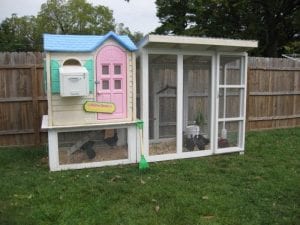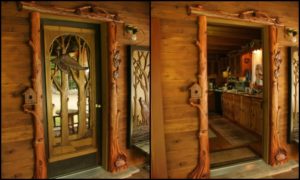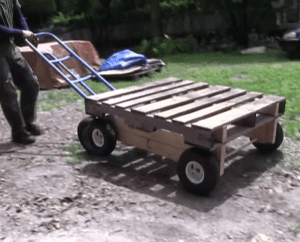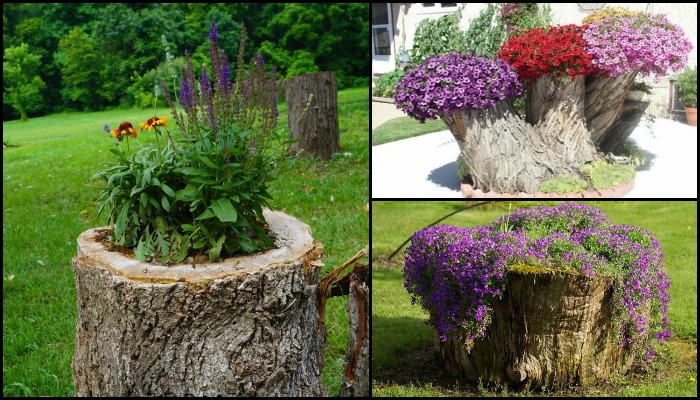
It is not uncommon for garden owners to find themselves with an unsightly tree stump in their garden. Tree stumps usually occupy prominent places, too, since those stumps were once beautiful trees. They may be in the middle of a lawn, in front of a building, or in another high-visibility spot. One may have even been the centerpiece of your garden!
Contents
Tree Stump Planters
Tree stump planters? Well, tree stumps can be difficult to remove and often require special tools and equipment. In some cases, it may be necessary to hire a professional tree removal service. You’d want to be rid of them, yes, but removing tree stumps can be a very difficult task. So if it’s not necessary to get rid of them in your area, why not turn them into planters instead?
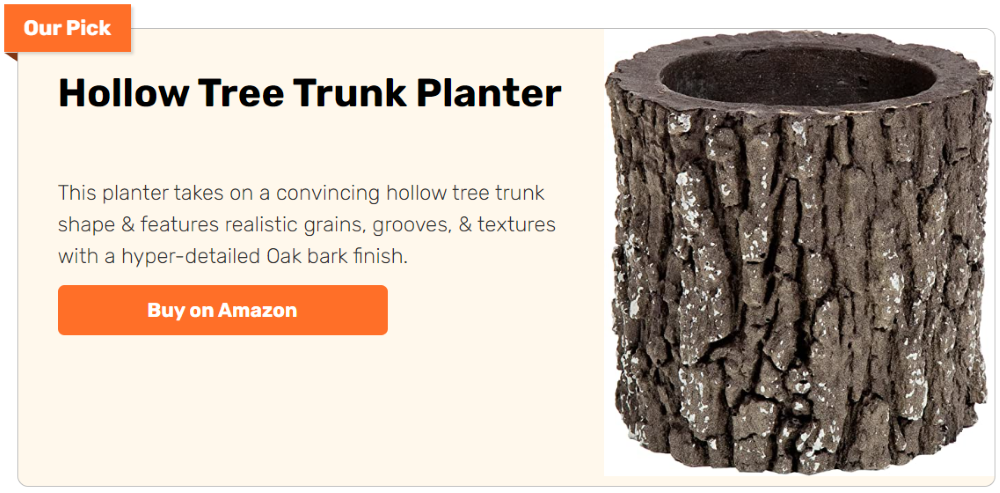
This tree stump planter idea is simple and easy to follow. All you need to do is hollow out the center of the tree stump to fill it with soil for your plants to grow! This is a great way to add some extra greenery to your yard or garden, and it’s a great project for beginners.
No matter which plants you choose, you’re sure to have a lovely and unique feature in your yard. Some people even make fairy gardens with their tree stumps! By adding some color and life to your tree stump, you can create a beautiful and one-of-a-kind garden feature.
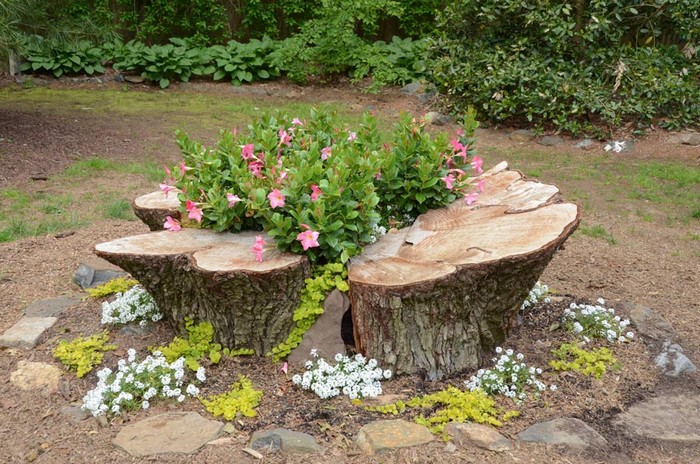
Take a look at some examples from our album below and learn how it’s done!
Making a Tree Stump Planter
Materials
- 3/4″ Gravel for drainage
- Potting Soil
- Compost
- Plants of your choice
Tools
- Mattock
- Safety Glasses
- Auger fitted with 3/8 to 1/2″ Bit
- Hand Trowel
Instructions
Step 1: Prepare Your Tree Stump
Put on your safety glasses to protect your eyes. Start by using the mattock to clear any debris around the stump. This will give you clear access and prevent any obstructions during the hollowing process.
Step 2: Hollow Out the Stump
Attach a 3/8 to 1/2 inch bit to your auger. Carefully begin drilling into the center of the stump, working your way outward to create a wide, shallow basin. The depth should be sufficient to accommodate the root ball of the plants you intend to use.
Step 3: Remove Excess Wood and Debris
Use the hand trowel to scoop out the wood chips and debris created by the auger. Make sure the hollowed area is clean so that soil and compost can be added without any mix of wood debris that might affect drainage and root growth.
Step 4: Improve Drainage
Add a layer of 3/4″ gravel at the bottom of the hollowed stump. This layer should be about two inches thick. The gravel helps with drainage, ensuring that water doesn’t pool at the bottom and cause root rot.
Step 5: Add Soil and Compost
Mix potting soil and compost in a separate container. Once mixed, add it to the stump, filling it to just a few inches below the rim. The compost will enrich the soil and support plant growth with vital nutrients.
Step 6: Plant Your Selection
Now it’s time to plant. Choose plants that fit the size of your planter and are suitable for the available light conditions. Arrange them as desired and use the hand trowel to dig individual holes for each plant. Gently place the plants in the holes and fill around them with the remaining soil-compost mix, pressing down lightly to eliminate any air pockets.
Step 7: Water Your New Planter
Give your new tree stump planter a thorough watering. This helps to settle the soil around the plants and ensures that they start to establish themselves in their new home.
Step 8: Ongoing Care
Maintain your planter by watering it as needed, based on the moisture preferences of the plants you’ve chosen. You might also want to add mulch to help retain moisture and control weed growth.
Click on any image to start the lightbox display. Use your Esc key to close the lightbox.![]()
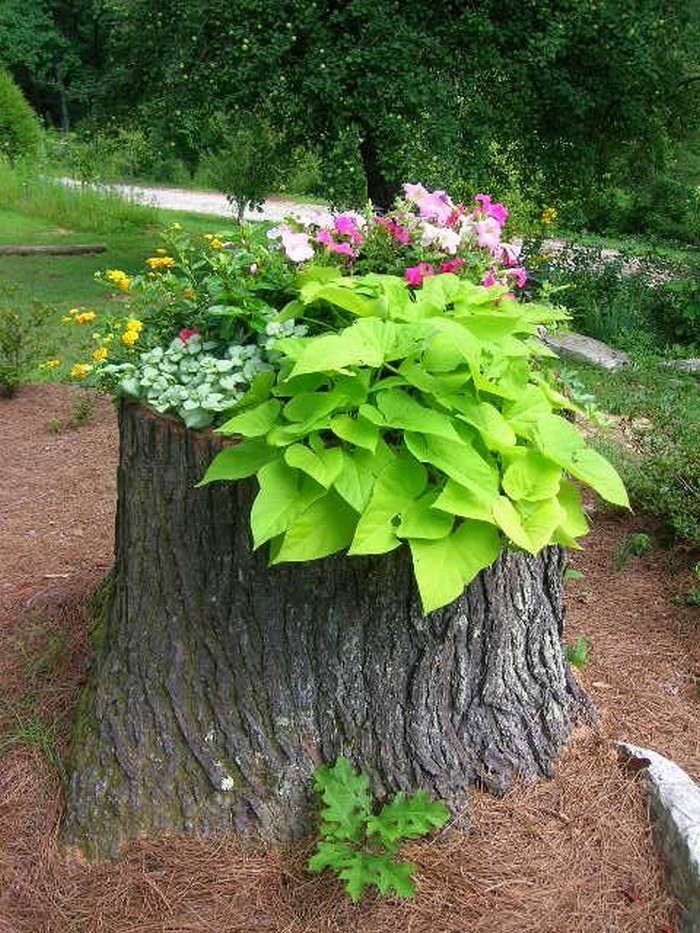
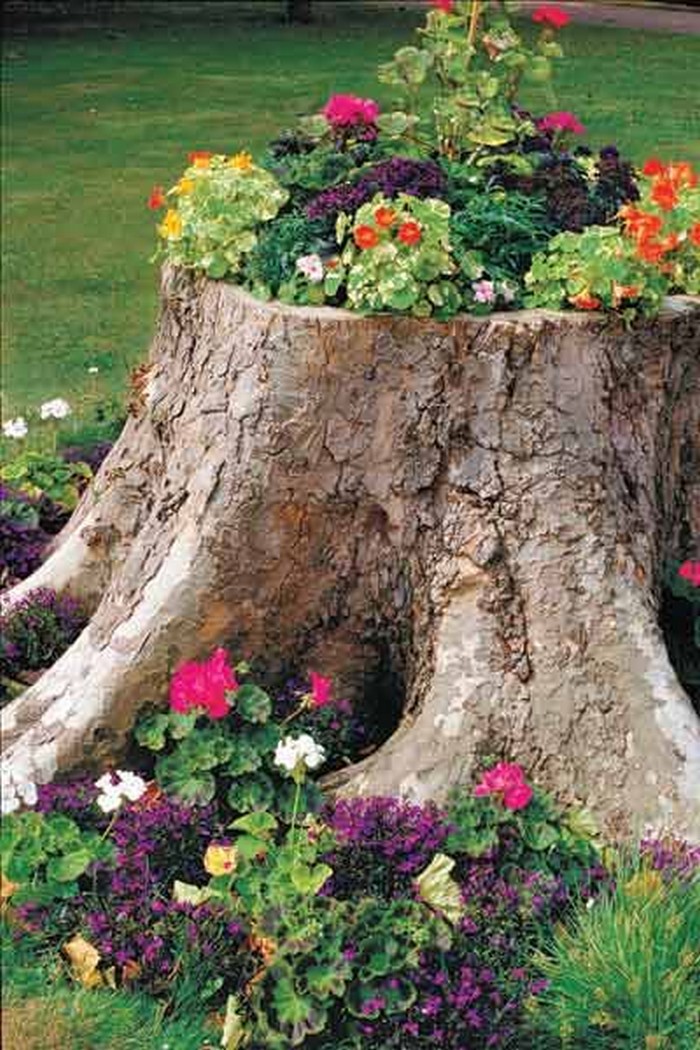
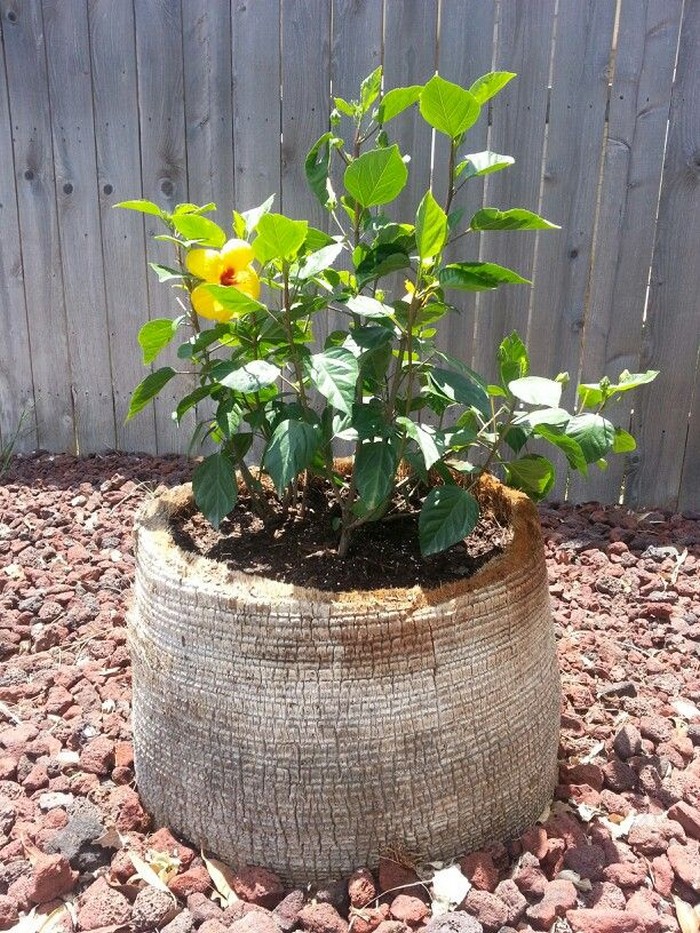
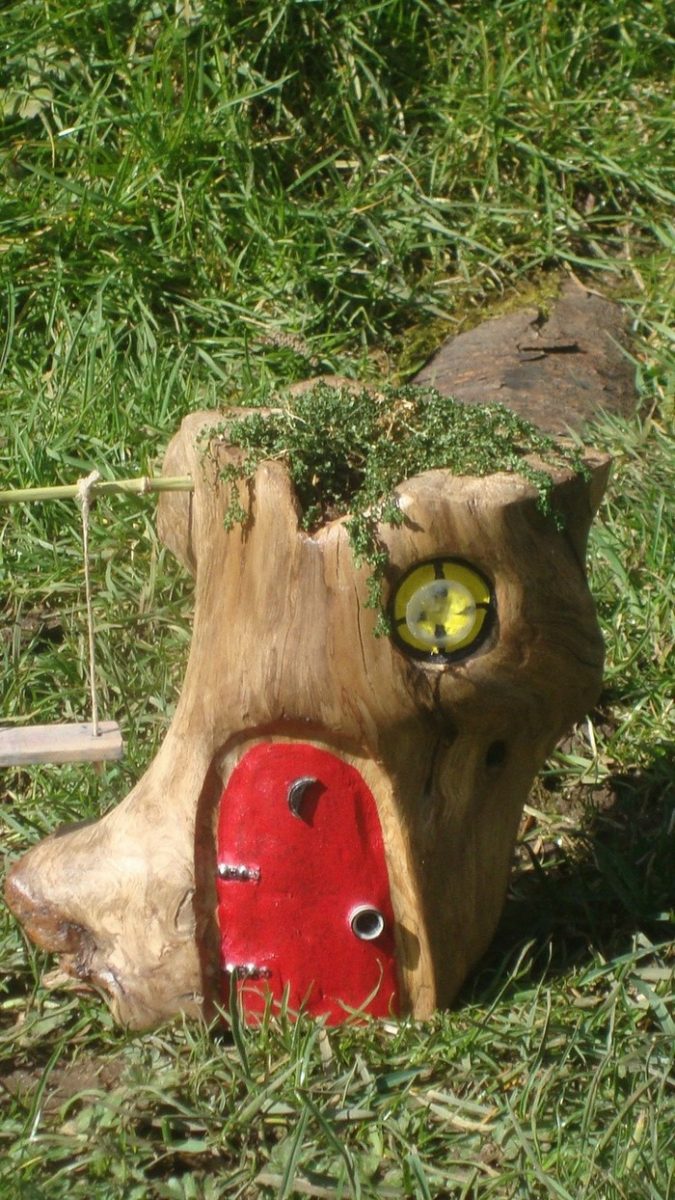
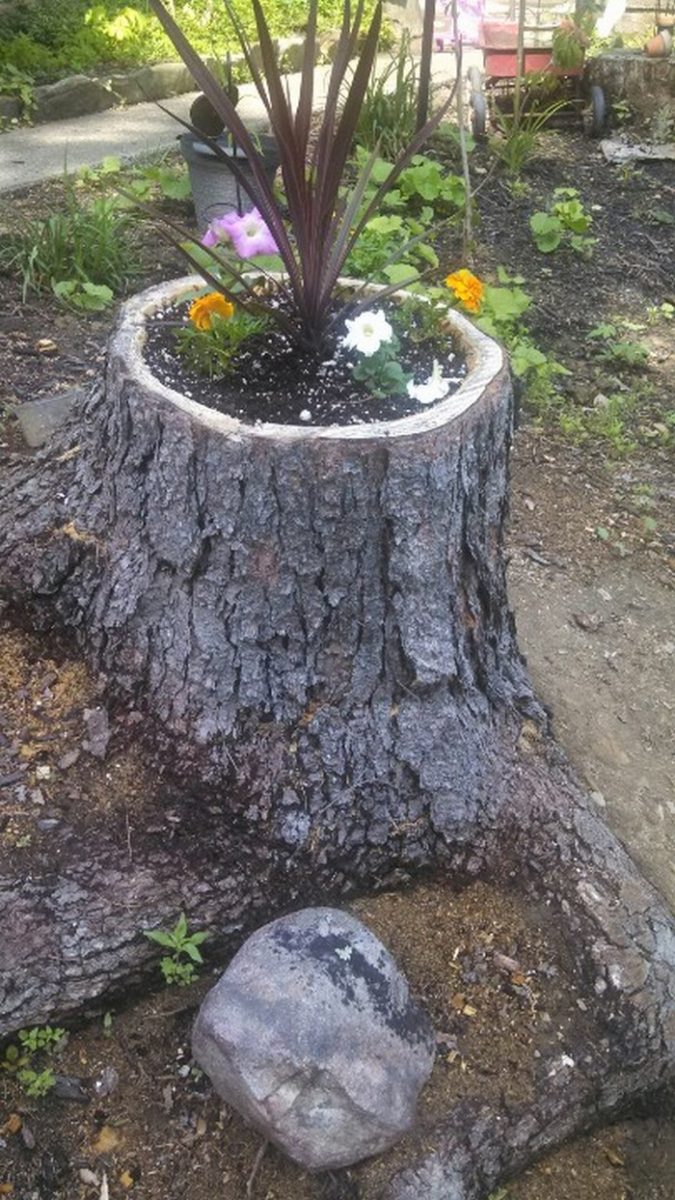
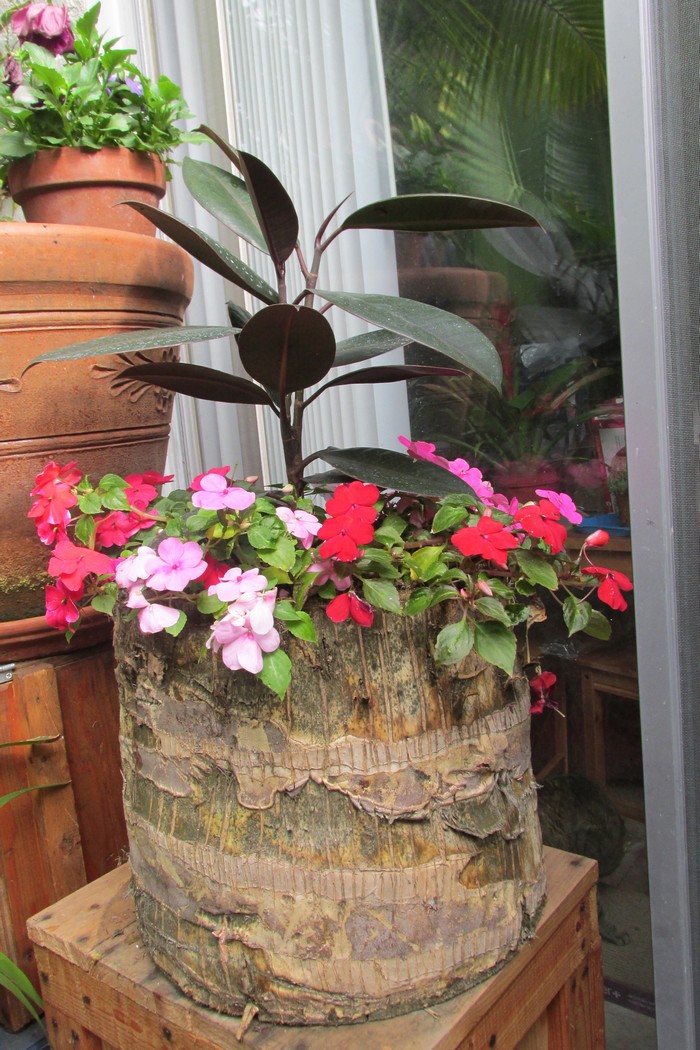
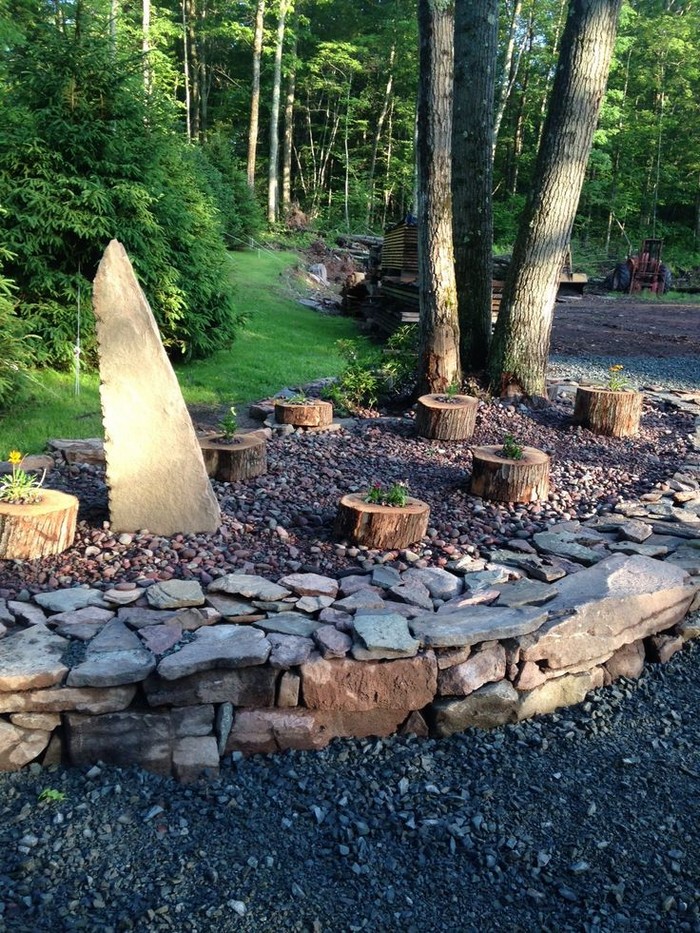
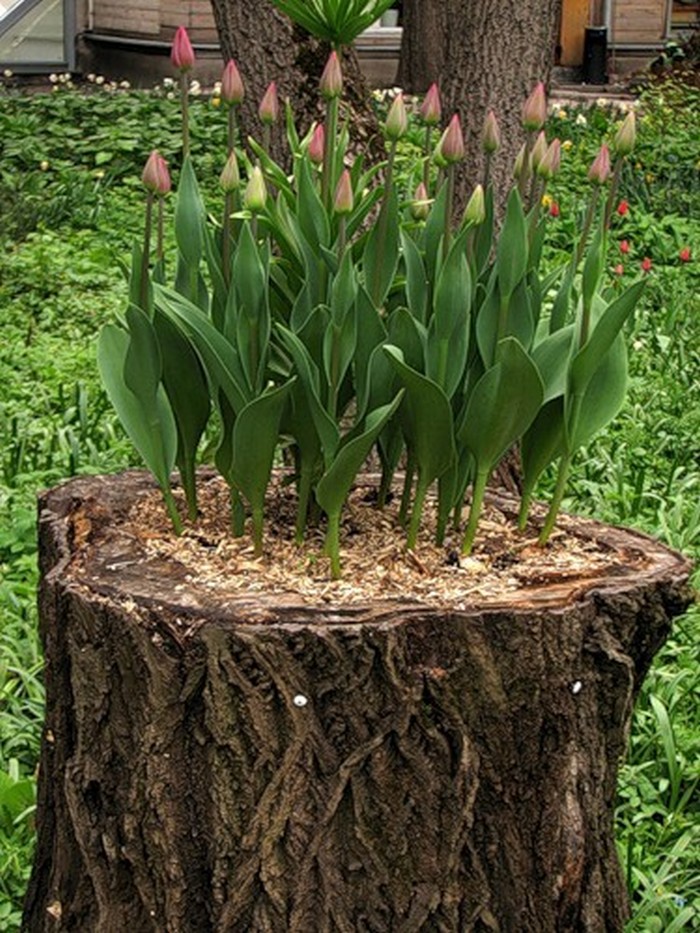
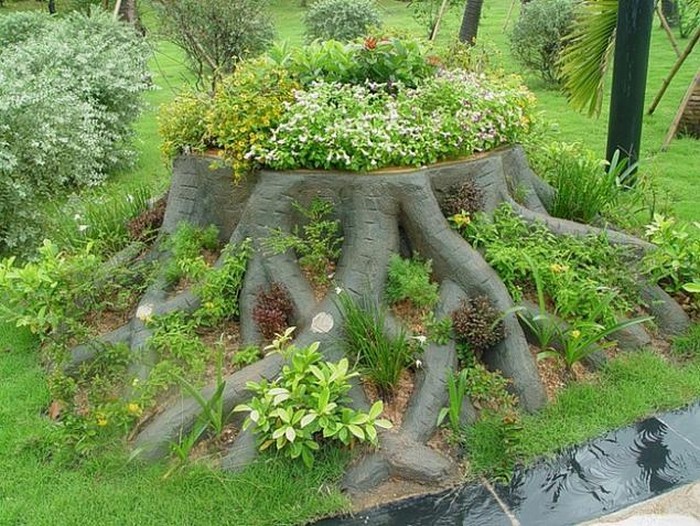

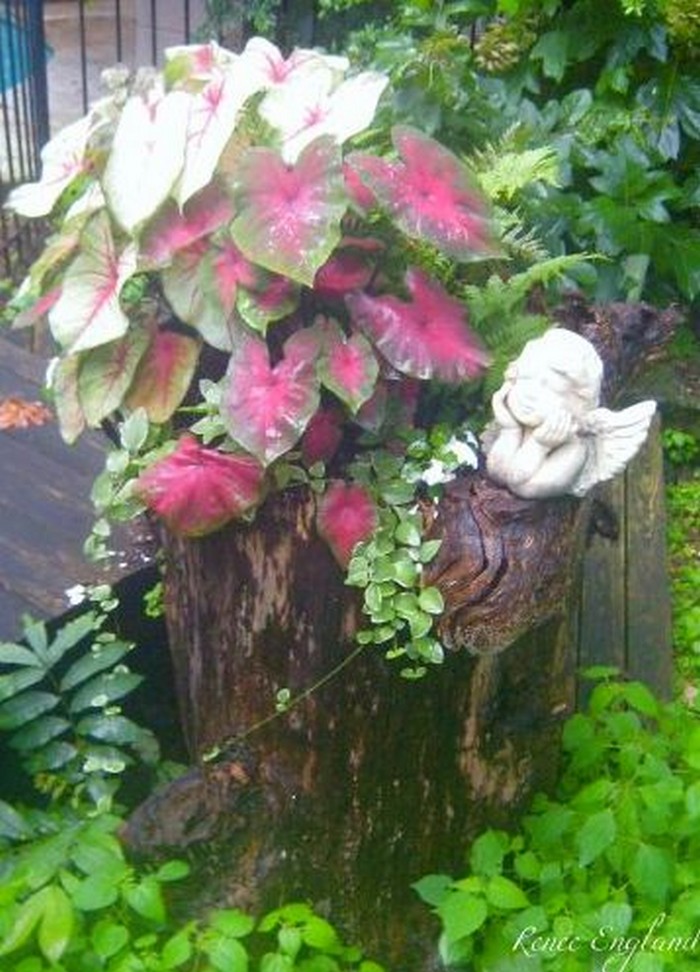
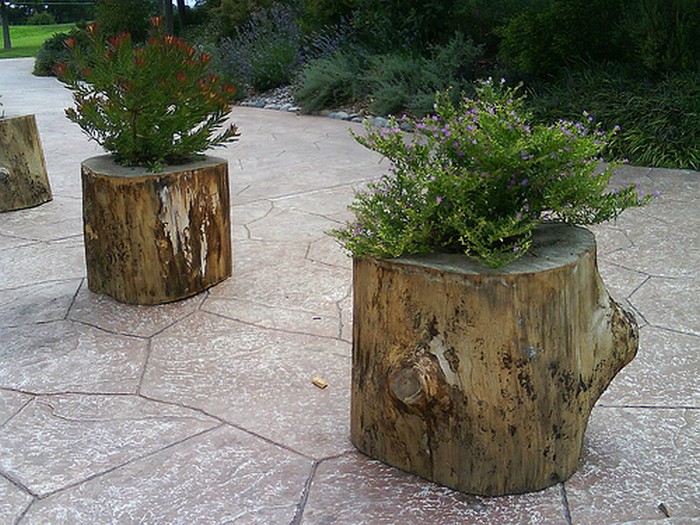
Types of Plants Suitable for Tree Stump Planters
Tree stump planters offer a unique, natural container for showcasing a variety of plants. Whether your garden aesthetic is wild and rustic or neatly tailored, choosing the right types of plants is crucial for the success of your tree stump planter.
The following categories of plants are well-suited to the unique conditions of a tree stump planter, each bringing its own charm and benefits to your garden landscape.
Succulents and Cacti
Ideal for: Dry climates and minimal water requirements
Succulents and cacti are perfect for tree stump planters, especially in regions with less rainfall. These plants thrive in well-drained conditions and can adapt to the compact space of a stump. Their varied shapes and sizes add visual interest and require minimal upkeep. Popular choices include aloe, echeveria, and sedum, which bring vibrant textures and colors to your tree stump planter.
Ferns
Ideal for: Shady areas and moisture-retentive environments
Ferns are a great choice for tree stump planters located in shady parts of the garden. They prefer moist, well-draining soil and can benefit from the natural woodiness of the stump, which helps retain moisture. Ferns like the lady fern or Japanese painted fern will add a lush, green look to your tree stump planter, enhancing its forest-like appeal.
Flowers
Ideal for: Adding color and attracting wildlife
Annuals and perennials can transform your tree stump planter into a vibrant floral display. Choose species that match the light conditions of your garden. For sunny spots, consider petunias, marigolds, or geraniums, which bloom brightly and abundantly. For shaded areas, impatiens or begonias can provide colorful blooms without the need for direct sunlight. These flowers will not only beautify your tree stump planter but also attract pollinators like bees and butterflies.
Herbs
Ideal for: Practical uses and easy access
Herbs are another excellent option for tree stump planters, particularly if you place them near your kitchen or outdoor cooking area for easy access. Herbs such as thyme, basil, and parsley require moderate to full sunlight and well-drained soil, making them well-suited for a tree stump planter. They offer both culinary benefits and pleasant aromas, enhancing both your dishes and your garden’s sensory appeal.
Small Shrubs and Trees
Ideal for: Creating a focal point
For larger tree stump planters, small shrubs or dwarf trees can serve as striking focal points. Consider species like boxwood for formal designs or flowering shrubs like hydrangeas for a splash of color. Dwarf trees, such as Japanese maples, can also thrive in a spacious tree stump planter, providing spectacular foliage that changes with the seasons.
Selecting the right plants for your tree stump planter not only enhances its beauty but also ensures the health and longevity of both the plants and the planter. Choose plants that will thrive in the specific conditions of your garden, and enjoy the unique aesthetic that a tree stump planter brings to your outdoor space.
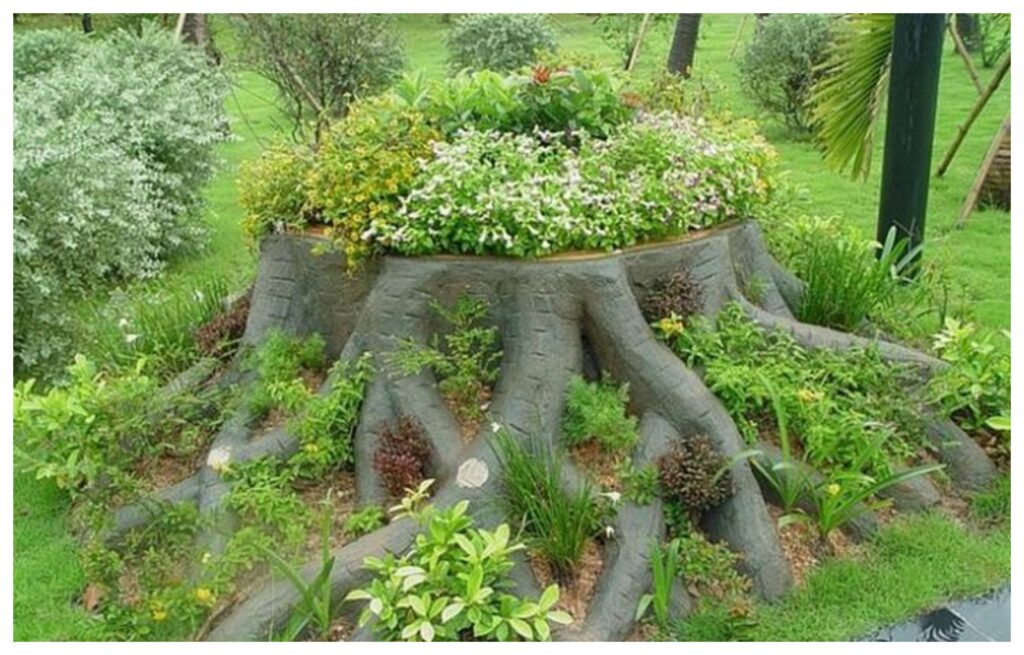
Decorating Your Tree Stump Planter
Tree stump planters are not only functional; they are also a fantastic canvas for creative decoration. Enhancing your tree stump planter with decorative elements can turn it into a standout feature in your garden. Here are some inspiring ideas to get you started on decorating your tree stump planter to reflect your personal style and add charm to your outdoor space.
Paint and Finishes
Painting your tree stump planter can instantly brighten up your garden and draw attention to the plants it hosts. Use outdoor-friendly paints to add a splash of color, or opt for a wood stain that enhances the natural patterns of the stump, providing a more rustic look. Whichever choice you make, ensure it complements the overall color scheme of your garden.
Adding Garden Art
Garden art can transform your tree stump planter from simple to spectacular. Consider embedding mosaic tiles, attaching decorative metal works, or even setting small figurines into the nooks and crannies of the stump. These elements can create a playful, artistic feel that personalizes your planter.
Lighting
Adding lighting to your tree planter can extend its beauty into the evening hours. Solar-powered lights are an eco-friendly choice, offering a subtle glow that can illuminate the plants and decorations. Alternatively, fairy lights wrapped around the stump or LED candles placed on the surface can create a magical, inviting atmosphere.
Natural Enhancements
To maintain a natural aesthetic, consider using elements like stones, bark, and moss around and on your tree planter. These materials can help the stump blend seamlessly with the rest of your garden while highlighting its organic origins. Planting ivy or other creeping plants that can cascade down the sides of the stump adds lushness and vitality.
Thematic Decorations
Your tree planter can also adhere to a specific theme that reflects a personal hobby or interest. For example, a fairy garden theme, complete with miniature houses, bridges, and tiny inhabitants, can captivate the imagination. Alternatively, a seaside theme with shells, driftwood, and plants like sea thrift or sedum can evoke coastal charm.
Decorating your tree planter offers endless possibilities to express creativity and make your garden uniquely yours. Whether you prefer a subtle enhancement or a bold transformation, these decorating ideas can help you achieve a look that you will love and enjoy.
Conclusion
Creating a tree stump planter is a resourceful way to repurpose an old stump into a vibrant addition to your garden. With the right plants and creative decorations, you can transform an unsightly stump into a stunning and eco-friendly garden feature. This project not only enhances the aesthetic appeal of your outdoor space but also provides a satisfying and practical gardening endeavor.


